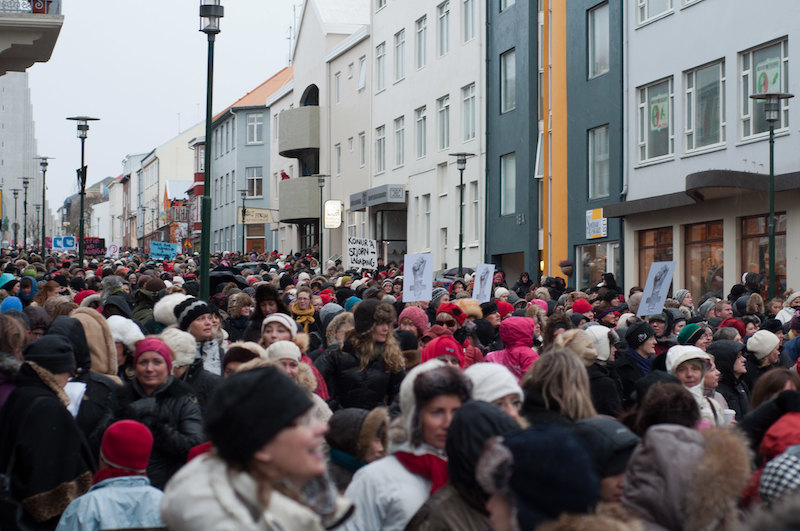Closing the Gender Wage Gap in Iceland
 Iceland is a small island nation, home to about 366,000 people, situated in the North Atlantic Ocean between Greenland and Norway. Owing partly to its small size, Iceland has become a world leader in various social indicators, such as gender equality and poverty reduction. For the 12th year in a row, Iceland was crowned the most gender-equal country in the world by the World Economic Forum in its 2021 Global Gender Gap Report. Despite this top ranking, it is still necessary to fully close the gender wage gap in Iceland, and in turn, alleviate remaining poverty within the nation.
Iceland is a small island nation, home to about 366,000 people, situated in the North Atlantic Ocean between Greenland and Norway. Owing partly to its small size, Iceland has become a world leader in various social indicators, such as gender equality and poverty reduction. For the 12th year in a row, Iceland was crowned the most gender-equal country in the world by the World Economic Forum in its 2021 Global Gender Gap Report. Despite this top ranking, it is still necessary to fully close the gender wage gap in Iceland, and in turn, alleviate remaining poverty within the nation.
Poverty in Iceland
The gender wage gap, no matter how small, can have a significant impact on one’s vulnerability to poverty. The gap between the earnings of men and women means that pay cuts, unemployment and economic downturns more dramatically impact women, which can and have historically led to increases in poverty in Iceland.
The poverty rate in Iceland is much lower in comparison to its Nordic neighbors, with about 9% of Icelanders earning an income that falls below the at-risk-of-poverty threshold in 2018. In other Nordic countries, this figure sits “between 12% and 16.4%” while the average in the European Union stands at 21.9% in 2020.
Another indicator of poverty, the unemployment rate, is also very low in Iceland, standing at 3.9% in 2019. Further, there is little disparity between the unemployment rate for men and for women. However, there remains a difference in the employment rate, with 88% of working-age men having a paid job in comparison to 83% of women. This difference links to roles of childcare and housekeeping, which traditionally fall on women. However, Iceland has robust subsidized childcare policies, which lessen the burden of traditional gender roles and allow women to participate in the labor force more freely.
The Gender Wage Gap in Iceland
The Global Gender Gap Report finds that Iceland has closed 89.2% of its gender wage gap as of 2021, taking the lead as the most gender-equal country in the world. There is a strong culture around social safety nets and welfare in Iceland, ensuring that gender and income inequalities are minimal. According to the OECD Better Life Index, wage bargaining in Iceland helps promote income inequality and decrease poverty rates. In addition to this, the government has implemented several policies in recent years with the intention of addressing the gender wage gap in Iceland.
Gender Equality Policies in Iceland
First, and most well-known, is the Equal Pay Certification, the first policy of its kind in the world. This policy, which went into effect in 2018, requires all companies with 25 or more employees to provide annual proof of equal pay for men and women. The policy previously only required companies to disclose information on wages, but the government expanded it to further increase job satisfaction and transparency in the pay system. This one-of-a-kind policy is making strides to close what is remaining of the gender wage gap in Iceland.
Iceland also requires a near equal gender balance on the boards of all publicly traded companies and requires a certain percentage of employees to be of each gender. All companies with 25 or more employees must also disclose the gender composition of their employees — an initiative aimed at pressuring companies to improve gender equality in the workplace. While this policy does not directly address the gender wage gap, it is a step in ensuring overall gender equality that is likely to promote equal pay.
Looking Ahead
All in all, the Icelandic government has shown success in continuously narrowing the gender wage gap through the implementation of these policies. This success allows the nation to stand as a world leader in gender equality. Despite this, there is still room for progress, especially as Iceland’s demographics change and the country struggles with the effects of the COVID-19 pandemic. Statistics Iceland reports that immigrants represented 15.2% of the population in Iceland in 2020 — a figure that is consistently growing. Immigrants are at greater risk of poverty in Iceland because they are “less likely to be employed” compared to “their native-born counterparts.” Furthermore, the gender wage gap disproportionately impacts immigrant women, therefore, as the immigrant population in Iceland increases, strong gender equality policies remain important.
Another threat to narrowing the gender wage gap in Iceland is the COVID-19 pandemic, which has stalled progress in gender equality and poverty eradication worldwide. In Iceland, like in all countries where women face a double burden of working while caring for children and the household, lockdowns and social distancing force more women to stay home from work. These pandemic effects may threaten to reverse progress in gender wage gap policies. However, there is hope that the constant and unyielding work of the Icelandic government will ensure progress for years to come.
– Emma Tkacz
Photo: Flickr
